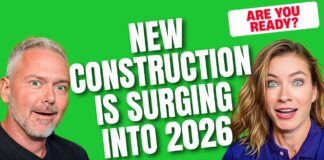Adding the right ingredients can create bubbles and knowing the ingredients that lead to a housing bubble is the easy part. Spotting the bubbles once they start to form could be the challenging part.
According to a report by Wolf Street, Minneapolis Fed President Neel Kashkari recently wrote in an essay that “spotting bubbles is hard,” that the Fed cannot see them. If it could see them, Kashkari added that it shouldn’t take action to stop them because it had only “limited policy tools,” and because “the costs of making policy mistakes can be very high.”
“It is really hard to spot bubbles with any confidence before they burst,” Kashkari wrote in the essay, pointing out stock prices and house prices. “Everyone can recognize a bubble after it bursts, and then many people convince themselves that they saw it on the way up.”
Housing prices across the U.S. are fairly stable, however markets vary widely because housing is local. In some metro areas, prices are rising at a record pace and have bypassed marks set during the last housing bubble.
Using data from the Case-Shiller Home Price Index, Wolf Street charted housing prices over the last 15 years for several key markets, including New York, San Francisco, Portland, Atlanta, Dallas, Denver, Seattle and Boston.
The S&P CoreLogic Case-Shiller National Home Price Index for March increased 7.7 percent year-over-year, which exceeds household income growth. This trend has been going on for several years as real household incomes stand nearly where they were a decade ago. This creates a phenomenon that fueled the last housing bubble. Could it be fueling a new bubble?

Real Estate website Trulia recently completed a report that detailed the ups and downs of the housing recovery, in which some parts of the country are seeing prices for nearly all homes above their 2006 peaks, while in other areas, most homes are still far below those levels.
According to Trulia Chief Economist Ralph McLaughlin, only a little over a third of homes in the U.S. have recovered to their pre-recession peak values.
“That distribution varies pretty widely across space,” he said. For example, in places like Denver and San Francisco, nearly 100 percent of homes have recovered, whereas in areas such as Las Vegas, Tucson or Bakersfield, fewer than 3 percent of homes have recovered.”
There are some segments that are picking up confidence in the domestic real estate market. According to the National Association of Home Builders, U.S. homebuilders felt better about the state of the domestic real estate market in the opening days of May than they had at almost any point since the housing bubble burst in the mid-2000s.
“There are still relatively few existing homes listed for sale and the small … supply is supporting the recent price increases,” David M. Blitzer, managing director and chairman of the Index Committee at S&P Dow Jones Indices, said in a statement. “Housing affordability has declined since 2012 as the pressure of higher prices has been a larger factor than stable to lower mortgage rates.”
According to the National Association of Realtors, the median price in April hit $246,100, which is 6.8 percent above the peak of Housing Bubble 1, when it was $230,400 in June 2006.
In 2006, local housing bubbles across the U.S. blew up in wild fashion on their own timetables. Amid mixed signals, some of the signs point to a number of local home price bubbles merging to form a new housing bubble, which should signal trouble to Fed officials.





















